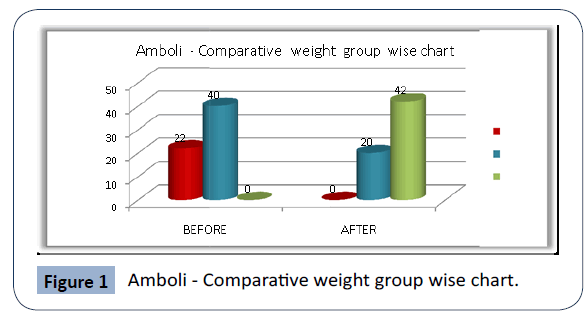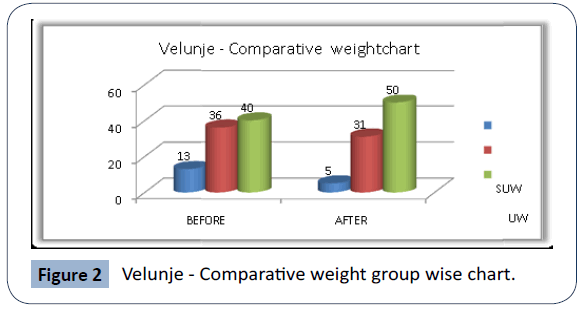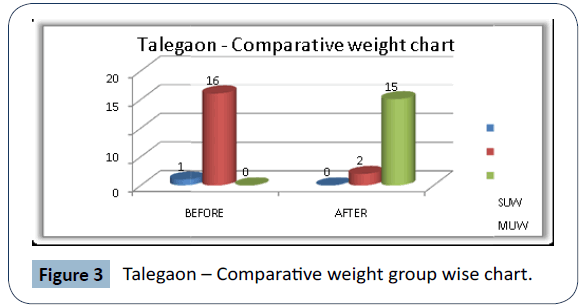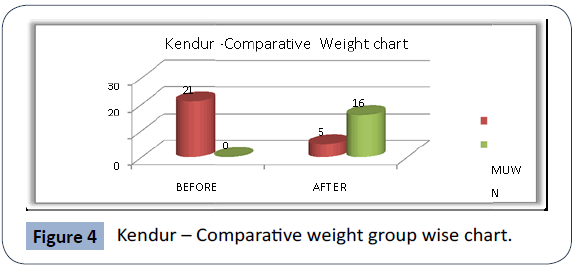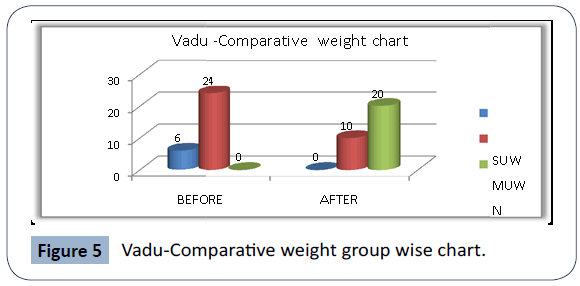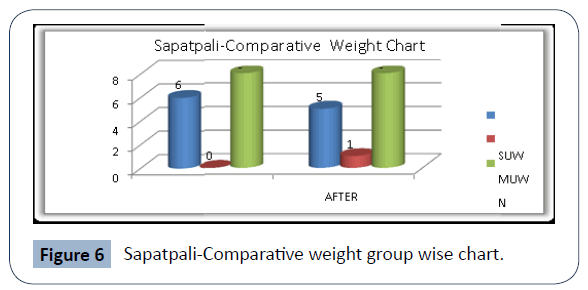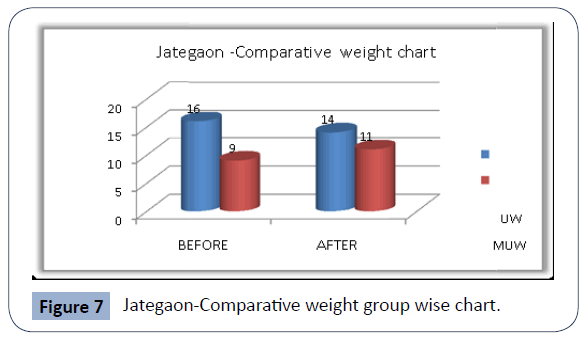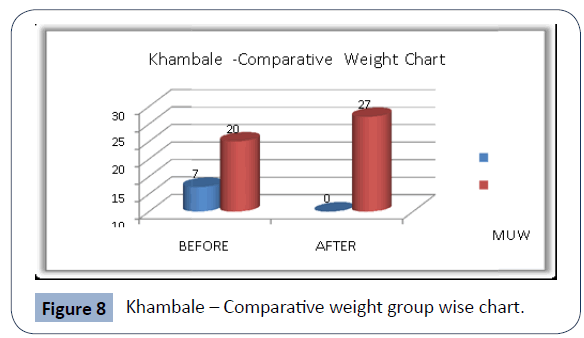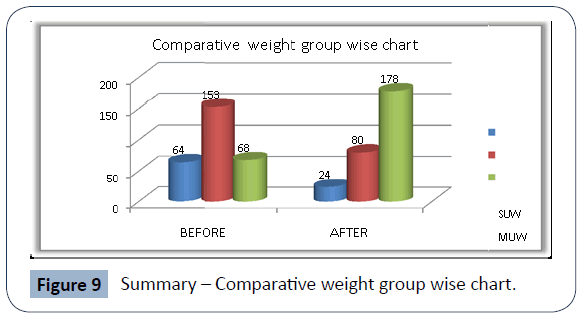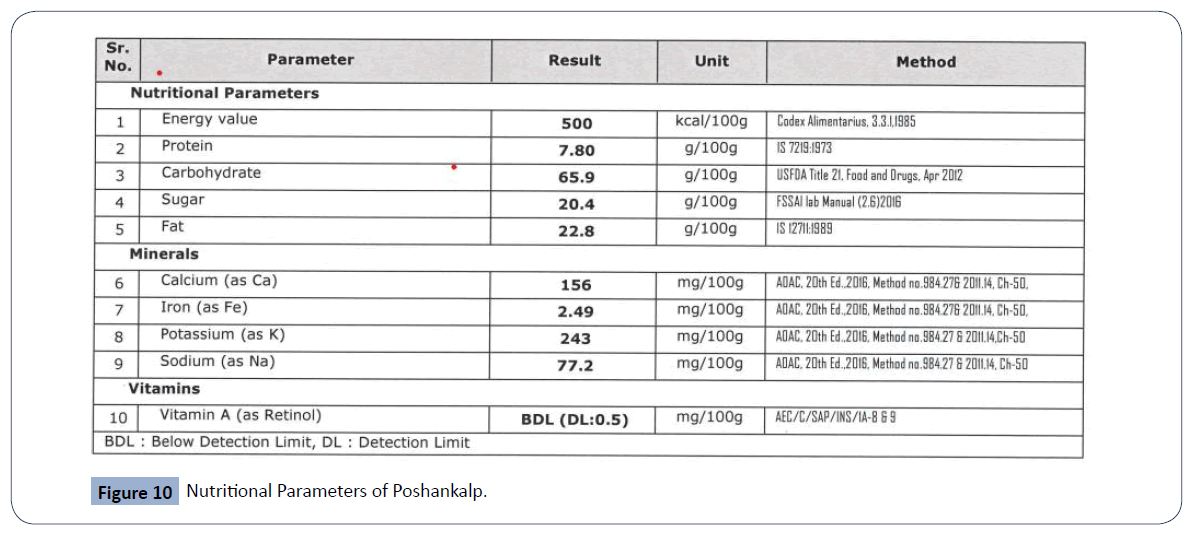Abbreviations: IJMRPS: International Journal of Medical Research and Pharmaceutical Sciences; MUW: Moderate under Malnutrition; N:Normal;MUW: Moderate Under Malnutrition; RDAs: dietary allowances; RJPT: Research Journal of Pharmacy and Technology; SUW: Severe Under Malnutrition; TDS: Thrice a day; Vol: Volume; WJPS: World Journal of Pharmacy and Pharmaceutical Sciences.
Background
When you look at children under five years of age, anaemia, infection, underweight, everything is related to the malnutrition. That means balance and good nutrition is essential for children’s physical and mental development. Malnourished children, particularly those with severe acute malnutrition, have a higher risk of death from common childhood illness such as diarrhoea, pneumonia, and malaria. Nutrition-related factors contribute to about 45% of deaths in children under-5 years of age [1]. The World Health Organization (WHO) estimated in a recent report that there are 178 million undernourished children in the world, 20 million of whom suffer from severe malnutrition; under nutrition contributing to 3.5 to 5 million annual deaths among children under 5 years [1,2]. Nutrition continues to be a key global development agenda under the Sustainable Development Goals (SDGs) after the completion of the Millennium Development Goals (MDGs) era. Despite a critical need for addressing malnutrition among all populations, the monitoring indicators currently in SDG2 and previously in MDG1 are consistently focused on children under 5 years of age [3]. The prevalence of child malnutrition in north Maharashtra is still very high, and little is known about its associated factors. The aim of this study was to identify these factors in children under 6 years in a suburban area of the country’s capital city.India is home to 46.6 million stunted children, a third of world’s total as per Global Nutrition Report 2018. Nearly half of all under-5 child mortality in India is attributable to under nutrition.
Burden of Malnutrition
Burden of malnutrition India also Maharashtra is very high Good nutrition allows children to survive, grow, develop, learn, play, participate and contribute, while malnutrition robs children of their futures and leaves young lives hanging in the balance. Maharashtra has a high prevalence rate of child malnutrition with worrying figures. The prevalence of child malnutrition in suburban regions of Nasik is still very high, and little is known about its associated factors. The aim of this study was to identify these factors in children less than 2 years in a suburban area of the country’s capital city.
Introduction
As per WHO definition Malnutrition refers to deficiencies, excesses or imbalances in a person’s intake of energy and/or nutrients. The term malnutrition covers 2 broad groups of conditions. One is ‘under nutrition’—which includes stunting (low height for age), wasting (low weight for height), underweight (low weight for age) and micronutrient deficiencies or insufficiencies (a lack of important vitamins and minerals)[4]. Malnutrition remains a major cause of morbidity and is the most common worldwide cause of death in children who are less than five years of age. The disease accounts for 60% of all childhood mortality in developing countries. It is estimated that 146 million children under the age of five are underweight in developing countries, compared to normal anthropometric parameters, and 3.5 million children a year die from malnutrition. Not a single country in the world is left untouched by the problem of malnourishment [4,5]. India was the second-most-populous and seventh-largest country in the world, with 1.27 billion people living in its 3.29 million square kilometres in 2013. Pakistan bordered India to the northwest; China to the north; Nepal, Bhutan, Bangladesh, and Myanmar to the northeast; the Arabian Sea to the southwest; and the Bay of Bengal to the southeast (see Exhibit 1 for a map showing India and its states). The country was divided into 29 states, 7 territories, and 1 national capital region [6].
Nutrition in India
Nutrition was measured using four types of indicators: anthropometry, biochemical tests, clinical signs, and assessments of dietary intake. Anthropometric measurements were the most ubiquitous. This methodcompared various physical measurements-including height, weight, mid-upper arm circumference, and body mass index (BMI) to those of a reference population and monitored individual growth over time (seeExhibit 5 for glossary of nutrition definitions). In 2006, the World Health Organization updated its international child growth standards, first published in the 1970s following a six-year study on 8,000c hildren in Ghana, Brazil, India, Norway, Oman, and the United States. The standards included indicators such as weight-for- age (used to measure the prevalence of underweight), height-for- age (used to measurethe prevalence of stunting), and weight-for- height (used to measure the prevalence of wasting), BMI, and key motor development milestones such as sitting, standing, and walking [7]. India adopted the World Health Organization’s child growth measures in 2008. Before these measures were adopted in 2006, almost half of India’s under-5 children were stunted, or too short for their age; 20% were wasted, or too thin for height; and 43% were underweight, with some states, including Madhya Pradesh, Jharkhand, and Bihar, faring worse than others in terms of underweight children.12 Children in rural areas were more likely to be undernourished; yet even in urban areas, one-third of children were underweight.
Malnutrition status of Maharashtra
The Comprehensive Nutrition Survey of Maharashtra 2012 for under-2 children later reported stuntingprevalence was 22.8%; wasting, 15.5%; and underweight, 21.8%. The District Level Household and FacilitySurvey 2012-2013 for under-5 children reported stunting prevalence was 30%; wasting, 34.1%; and underweight, 38.7%. While underweight increased slightly between 2006 and 2012, it was still lower thanthe 2002 prevalence of 43.6% (see Exhibit 8 for child nutrition indicators by age in 2006 and 2012). Child feeding practices remained subpar, and women’s health and access to health services were improving (see Exhibits 9-11 for more on child-feeding trends, the status of women, and related economic indicators inMaharashtrain 2013 [5].
Various factors are responsible for malnutrition; different authors have addressed the issues of Malnutrition of Children.5 found that the proportion of children having low birth weight are at higher risk among women who are not educated. Nutrition status has found to be positively associated with infant feeding practices. It is found that children who take exclusive breastfeeding fewer chance of malnutrition.6 The optimal use of nutritious food feeding is healthy for child growth and development.7 Infectious diseases like diarrhoea, pneumonia, and measles increase the risk of mortality among those children who are stunted, underweight and wasted children.8,9 Practices of personal hygiene and sanitation are fundamental to avoid stunting among children and are useful for the growth and development of children (Rah et al., 2015). The prevalence of malnutrition was found to be high among the tribal population due to their poor condition. Parents are working in agriculture, and non-agricultural area similarly who are below the poverty line and having Antyodya card and no schooling these are factor leads to high malnutrition among the children.10 Evidence suggests that the level of stunted children has declined from 52% in 1992-93 to 38% by 2015-16 but the prevalence of wasted had increased from 17% to 28% during this period as reported in National Family Health Survey (NFHS 4). Moreover, in 2016, India accounted for 62 million stunted children, 40% of the global share of stunting in Maharashtra (UNICEF.3 the trends in malnutrition prevalence in Maharashtra from 2005 to 2016 by different rounds of NFHS surveys heights of Nutrition data (2005-2006 National Family Health Survey (NFHS- 3) Maharashtra Fact Sheet).
The nutrition situation in Maharashtra is slightly better than the national average with improvements from 1998-99 and 1992-93 except for an increase of anaemia prevalence among pregnant women.
The feeding practice for children aged 6-9 months shows an alarming pattern with only 48% of children aged 6-9 months receiving solid or semisolid food and breast milk. This is significantly lower than the national average of almost 56%. Furthermore, the prevalence drops to 40% for rural areas compared with the national average of 54% and as low as 23.3% for non-educated mothers compared with the national average of 49%.
The prevalence of overweight and obesity in Maharashtra is higher than the national average for both female and male with Mumbai reaching almost 35% of obesity among the female population.
Within Maharashtra, there are significant differences between rural and urban areas with the rural areas being more affected by malnutrition. However, the most outstanding gap in all indicators is between non-educated and well-educated respondents.
Malnutrition and Anaemia rates are high among children
Almost 38% of children under age three are stunted (India-38.4%) and almost 40% are underweight (India 45.9%). Both indicators have slightly improved from 1998-99 and 1992-93.
Wasting affects 14.6% of children under age (India 19%) with a steady improvement from 1998-99 and 1992-93.
Compared with urban areas, under-nutrition is higher in rural areas and in Mumbai. Similar to the national picture, there is a strong correlation between child malnutrition and the level of maternal education showing a two-fold difference between non-educated and well-educated mothers. The stunting and underweight prevalence for children with illiterate mothers is 52.9% and 53.1% respectively contrasted with 22.9% and 25.9% for children with well-educated mothers. The stark difference may be linked to access to nutritious diet and complementary feeding at 6-9 months.Almost 72% of children under age three are anaemic (India 79.2). There is a significant urban-rural divide with Mumbai having the lowest prevalence with 59.5% compared with 76.8% in rural areas. The non-educated versus educated mothers’ difference is not as strong with 75% and 71% relatively. This may be linked to a more general poor quality of nutrition and hygiene conditions and limited access to iron supplementation.
Improvements Needed in Infant and Child Feeding especially for the age 6-9 months 53% of children are fed only breast milk for the first 6 months (India 46%). Exclusive breastfeeding is significantly higher among the non-educated mothers, in rural areas and in Mumbai. Work factor and access to breast milk substitutes may have an impact among urban and better educated mothers. The positive deviance in Mumbai may be associated with an increased awareness among the female working class and better baby-friendly employment conditions. 51.8% of children under three years are breastfed within one hour of birth (India 23.4%) with no significant difference between urban and rural areas and between well-educated and non-educated mothers.
Only 47.8% of children aged 6-9 months receive solid or semisolid food and breast milk. This is significantly lower than the national average of almost 56%. The prevalence drops as low as 40% in rural areas (India rural 54%) and 23.3% among non-educated mothers (India non-educated 49%) showing a high-priority gap. The prevalence in urban areas and in Mumbai is 58% and 56.6% respectively (India urban 62.1%). 32% of children age 12-35 months received vitamin A supplements in the six months before the survey (India 23%) with the highest prevalence in urban areas (34.2%) followed by rural areas (29.9%) and Mumbai (27%) with a significant difference between non-educated (26.2%) and well-educated mothers (32.2%).
A significant percentage of Women and Men are either too thin or Too Fat 32.6% of married women (India 33%) and almost 30% of men (India 28%) are too thin, according to the body mass index (BMI). Underweight is strikingly most common among the non-educated and the rural population compared with Mumbai and urban areas that show a similar prevalence.
Overweight and obesity affects 17% of women (India 14.8%) and almost 16% of men (India 12%). Overweight and obesity are strikingly most common in urban areas and among the welleducated with Mumbai reaching almost 35% of obesity among the female population as compared with the national urban average of 29%.
Anaemia is widespread
49% of women (India 56.2%) and 16.2% of men (India 24.3) suffer from anaemia. Among pregnant women, anaemia has increased from 52.6% to almost 58%. Only 30.5% of pregnant women consume Iron and Folic Acid supplementation for 90 days (India 22.3%) with 16.4% among the non-educated women compared to 45.2% among the well-educated ones. Rural and urban areas have the same prevalence of 30.5% with Mumbai reaching only 27.5% (India urban 34.5% respectively [8]. India is home to 46.6 million stunted children, a third of world’s total as per Global Nutrition Report 2018. Nearly half of all under-5 child mortality in India is attributable to under nutrition. Any country cannot aim to attain economic and social development goals without addressing the issue of malnutrition. Poor nutrition in the first 1000 days of a child’s life can also lead to stunted growth, which is associated with impaired cognitive ability and reduced school and work performance. Malnutrition in children occurs as a complex interplay among various factors like poverty, maternal health illiteracy, diseases like diarrhoea, home environment, dietary practices, hand washing and other hygiene practices, etc. Low birth weight, episode of diarrhoea within the last 6 months and the presence of developmental delay are often associated with malnutrition in most developing nations including India. This chapter is a small attempt to highlight the state of malnutrition in India and tries to get an insight to overcome the problem. This chapter also highlights the issues and challenges for not obtaining the desired nutritional outcomes. It also provides an insight that this issue can be addressed by adopting comprehensive, coordinated and holistic approach with good governance and help of civil society [9].
Various Forms of Malnutrition
Under nutrition: There are 4 broad sub-forms of under nutrition: wasting, stunting, underweight, and deficiencies in vitamins and minerals. Undernutrition makes children in particular much more vulnerable to disease and death.
Low weight-for-height is known as wasting. It usually indicates recent and severe weight loss, because a person has not had enough food to eat and/or they have had an infectious disease, such as diarrhoea, which has caused them to lose weight. A young child who is moderately or severely wasted has an increased risk of death, but treatment is possible.Low height-for-age is known as stunting. It is the result of chronic or recurrent undernutrition, usually associated with poor socioeconomic conditions, poor maternal health and nutrition, frequent illness, and/or inappropriate infant and young child feeding and care in early life. Stunting holds children back from reaching their physical and cognitive potential. Children with low weight-for-age are known as underweight. A child who is underweight may be stunted, wasted, or both.
Micronutrient-related malnutrition: Inadequacies in intake of vitamins and minerals often referred to as micronutrients, can also be grouped together. Micronutrients enable the body to produce enzymes, hormones, and other substances that are essential for proper growth and development. Iodine, vitamin A, and iron are the most important in global public health terms; their deficiency represents a major threat to the health and development of populations worldwide, particularly children and pregnant women in low-income countries.
Overweight and obesity: Overweight and obesity is when a person is too heavy for his or her height. Abnormal or excessive fat accumulation can impair health. Body mass index (BMI) is an index of weight-for-height commonly used to classify overweight and obesity. It is defined as a person’s weight in kilograms divided by the square of his/her height in meters (kg/m²). In adults, overweight is defined as a BMI of 25 or more, whereas obesity is a BMI of 30 or more. Overweight and obesity result from an imbalance between energy consumed (too much) and energy expended (too little). Globally, people are consuming foods and drinks that are more energy-dense (high in sugars and fats), and engaging in less physical activity.
Diet-related non communicable diseases
Diet-related noncommunicable diseases (NCDs) include cardiovascular diseases (such as heart attacks and stroke, and often linked with high blood pressure), certain cancers, and diabetes. Unhealthy diets and poor nutrition are among the top risk factors for these diseases globally [7]. Malnutrition in children, especially young children, can lead to stunted growth, developmental delays and more sickness due to poor immune function.Malnutrition also can be the result of an eating disorder, organ failure or severe infection or physical trauma such as a head injury. Malnutrition frequently occurs in the older adult population, especially in those with dementia or Alzheimer’s disease. Tooth loss and other dental issues, loss of appetite and functional decline are contributing factors to malnutrition among older adults [10].
Aim: This paper assesses the extent of the Nutritional potential of Poshankalp and Efficacy of the Poshankalp in malnourished children at eight Anganwadi Canters, viz. Pune, Nasik, Nan durbar, Latur, Ahmednagar district.
Primary objective: To evaluate the Potential and efficacy of the Poshankalp.
Secondary: To end Malnourishment.
Hypothesis: H0: μD=0-Null hypothesis.
Null hypothesis is that there is no significant difference in the mean weight of the children before “Poshankalp” and the mean weight of the children after “Poshankalp”.
Methods
Study Setting and Design: Observational study on the basis of retrospective data of Anganwadi.
Already collected data was taken from Anganwadi centers of 6 months and up to the 6 years children one who received “Poshankalp” in 2012. Data was collected from 8 different Anganwadi centres in Pune, Nasik, Nan durbar, Latur and Ahmad Nagar District (Tribal Areas). The data of 285 children were collected, analysed statistically and drawn interpretation.
Study Duration: Eighteen months.
Design: Retrospective Data based study.
Participation: Total number of children’s were 285 of age 6 month to 6 years at in 8 different Anganwadi centres in Pune and Nasik, Nandurbar, Latur, Ahamad Nagar District (Tribal Areas).
Investigational Product- Poshankalp
Route of administration: Oral
Duration of Treatment: 1 month
Dose: 100-gram TDS as food supplements with routine diet
Composition: Poshankalp contain Nachani, Jaggery, Ground Nut, Soya bean, Rajgira, Wheat, Green grams, Shatawari, Ashwagandha, Trikatu.
Procedure: Data collection of 8 different anganwadi centres in Pune and Nashik, Nandurbar, Latur, Ahmad Nagar District (Tribal Areas) centers of 285 childrens of age group 6 month to 6 years was done & systematization was done after that Unbiased statistical analysis & interpretationwas performed on the basis of statistical analysis, Inferences, conclusion andresults was drawn.
All data show children already an examined by complete physical examination was carried out on each child before administration of Poshankalp. Data was collected, from Anganwadi centres of 285 children of age group 6 months to 6 years one come to Anganwadi. Poshankalp were distributed to 285 children in 8 different Anganwadi centres in Pune and Nashik, Nandurbar, Latur, Ahmad Nagar District (Tribal Areas) and children one received Poshankalp for one month as nutritional supplements.
Result: We observed data of 285 children of Anganwadi. Age group of children was 6 months to 6 years. The final sample included 285 children. Below tables showed details of collected data and statistical analysis.
1. Anganwadi Amboli
The Poshankalp project data shows 62 records. Analysis was performed with 62 records (Table 1).
| Dates |
17/03/2012 |
15/02/2012 |
| Weight after |
Weight before |
| Mean |
10.67419355 |
10 |
| Variance |
5.685880487 |
6.35704918 |
| Observations |
62 |
62 |
| PearsonCorrelation |
0.834654704 |
|
| HypothesizedMeanDifference |
0 |
|
| df |
61 |
|
| T Stat |
3.747325822 |
|
| P(T<=t)one-tail |
0.000199528 |
|
| TCriticalone-tail |
1.670219484 |
|
| P(T<=t)two-tail |
0.000399055 |
|
| T Criticaltwo-tail |
1.999623567 |
|
Table 1 Amboli-t-Test: paired two sample foreans.
Interpretation: As can be seen, p value for the one tailed test (0.000199528) is much smaller than 0.05. Alsot critical one tail (1.670219484) is smaller than t test statistic=3.747325822. Therefore, the null hypothesis of zero difference may be rejected. This means the alternative hypothesis of mean weight after Poshankalp being significantly larger than the mean weight before Poshankalp can beaccepted (Figure 1).
Figure 1 Amboli - Comparative weight group wise chart.
2. Anganwadi-Velunje Tal Trymbakeshwar Dist. Nashik The Poshankalp project data shows 115 records but due to missing information analysis was performed with 89 records (Table 2).
| Dates |
17/03/2012 |
15/02/2012 |
| Weight after |
Weight before |
| Mean |
11.27977528 |
10.4247191 |
| Variance |
6.555268131 |
6.55915475 |
| Observations |
89 |
89 |
| PearsonCorrelation |
0.972635805 |
|
| HypothesizedMeanDifference |
0 |
|
| df |
88 |
|
| T Stat |
13.46552782 |
|
| P(T<=t)one-tail |
2.16981E-23 |
|
| T Criticalone-tail |
1.66235403 |
|
| P(T<=t)two-tail |
4.33962E-23 |
|
| T Criticaltwo-tail |
1.987289823 |
|
Table 2 Velunje- t-Test: paired two sample for Men’s.
Interpretation: As can be seen, p value for the one tailed test (2.16981E-23) is much smaller than 0.05. Also t critical one tail (1.66235403) is smaller than ttest statistic (13.46552782). Therefore, the null hypothesis of zero difference may be rejected. This means the alternative hypothesis of mean weight after Poshankalp being significantly larger than the mean weight before Poshankalp can be accepted (Figure 2).
Figure 2 Velunje - Comparative weight group wise chart.
Interpretation: It can be seen that more children are shifting to NORMAL category. It can also be seen that number of children under both Moderate under Malnutrition category and Severe under Malnutrition category have reduced and under NORMAL category the number has increased by.
3. Anganwadi-Talegaon Tal Shirur, Dist. Pune
The Poshankalp project data shows 17 records and analysis was performed with all 17 records (Table 3).
| Dates |
24-03-2012 |
18-02-2012 |
| Weight after |
Weight before |
| Mean |
12.36666667 |
11.86095238 |
| Variance |
4.641333333 |
4.378259048 |
| Observations |
21 |
21 |
| Pearson Correlation |
0.995420422 |
|
| Hypothesized Mean Difference |
0 |
|
| df |
20 |
|
| T Stat |
10.90944921 |
|
| P(T<=t)one-tail |
3.59E-10 |
|
| tCritical one-tail |
1.724718218 |
|
| P(T<=t)two-tail |
7.18E-10 |
|
| T Critical two-tail |
2.085963441 |
|
Table 3 Talegaon-t-Test: Paired two sample for Means.
Interpretation: As can be seen, p value for the one tailed test (5.94304E-12) is muchsmallerthan 0.05. Also t critical one tail (1.745883669) is smaller than ttest statistic (16.96655411). Therefore the null hypothesis of zero difference may be rejected. This means the alternative hypothesis of mean weight after Poshankalp being significantly larger than the mean weight before Poshankalp can be accepted (Figure 3).
Figure 3 Talegaon – Comparative weight group wise chart.
Interpretation: Where there was no child in NORMAL category before Poshankalp, it is easily seen that almost allarein NORMAL and remaining 2 in Moderate under Malnutrition category after Poshankalp. No child is in Severe under Malnutrition category.
4.Anganwadi-Kendur Tal Shirur, Dist. Pune
The Poshankalp project data shows 21 records and analysis was performed with all 21 records (Table 4).
| Dates |
24/03/2012 |
18/02/2012 |
| Weight after |
Weight before |
| Mean |
12.75 |
11.93823529 |
| Variance |
2.5446875 |
2.467352941 |
| Observations |
17 |
17 |
| Pearson Correlation |
0.992353745 |
|
| Hypothesized Mean Difference |
0 |
|
| df |
16 |
|
| T Stat |
16.96655411 |
|
| P(T<=t)one-tail |
5.94304E-12 |
|
| T Critical one-tail |
1.745883669 |
|
| P(T<=t)two-tail |
1.18861E-11 |
|
| T Critical two-tail |
2.119905285 |
|
Table 4 Kendur- t-Test: paired two sample for Means.
Interpretation: As can be seen, p value for the one tailed test (3.58993E-10) is much smaller than0.05. Also, t critical one tail (1.724718218) is smaller than t test statistic (10.90944921). Therefore, the null hypothesis of zero difference may berejected. This means the alternative hypothesis of mean weight after Poshankalp being significantly larger than the mean weight before Poshankalp can be accepted (Figure 4).
Figure 4 Kendur – Comparative weight group wise chart.
Interpretation: Where there was no child in NORMAL category before Poshankalp, it is easily seen that almost all are in NORMAL and remaining 5 in Moderate under Malnutrition category after Poshankalp. No child is in Severe under Malnutrition category.
5. Anganwadi- Vadu Tal Shirur, Dist Pune
The Poshankalp project data shows 30 records and analysis was performed with all 30 records (Table 5).
| Dates |
24/03/2012 |
18/02/2012 |
| Weight after |
Weigh before |
| Mean |
11.976 |
11.09866667 |
| Variance |
2.71465931 |
3.185632644 |
| Observations |
30 |
30 |
| Pearson Correlation |
0.977214204 |
|
| Hypothesized Mean Difference |
0 |
|
| df |
29 |
|
| T Stat |
12.2915156 |
|
| P(T<=t)one-tail |
2.52301E-13 |
|
| T Critical one-tail |
1.699126996 |
|
| P(T<=t)two-tail |
5.04602E-13 |
|
| T Critical two-tail |
2.045229611 |
|
Table 5 Vadut-Test: Paired two sample for Means.
Interpretation: As can be seen, p value for the one tailed test (2.52301E-13) is much smaller than 0.05. Also, t critical one tail (1.699126996) is smaller than t test statistic (10.90944921). Therefore, the null hypothesis of zero difference may be rejected. This means the alternative hypothesis of mean weight after Poshankalp being significantly larger than the mean weight before Poshankalp can be accepted (Figure 5).
Figure 5 Vadu-Comparative weight group wise chart.
Interpretation: Where there was no child in NORMAL category before Poshankalp, it is easily seen that two thirds are in NORMAL and the rest in Moderate under Malnutrition category after Poshankalp. No child is in Severe under Malnutrition category.
6. Anganwadi Sapatpali
The Poshankalp project data shows 14 records and analysis was performed with all 14 records (Table 6).
| Dates |
14/03/2012 |
10/02/2012 |
| Weight after |
Weight before |
| Mean |
10.89285714 |
10.5 |
| Variance |
11.87456044 |
12.34307692 |
| Observations |
14 |
14 |
| Pearson Correlation |
0.99380385 |
|
| Hypothesized Mean Difference |
0 |
|
| df |
13 |
|
| T Stat |
3.73894864 |
|
| P(T<=t)one-tail |
0.001239542 |
|
| T Criticalone-tail |
1.770933383 |
|
| P(T<=t)two-tail |
0.002479085 |
|
| T Criticaltwo-tail |
2.160368652 |
|
Table 6 Sapatpali-t-Test: paired two sample for Means.
Interpretation: As can be seen, p value for the one tailed test (0.001239542) is smaller than 0.05. Also, t critical one tail (1.770933383) is smaller than t test statistic (3.73894864). Therefore, the null hypothesis of zero difference may be rejected. This means the alternative hypothesis of mean weight after Poshankalp being significantly larger than the mean weight before Poshankalp can be accepted (Figure 6).
Figure 6 Sapatpali-Comparative weight group wise chart.
Interpretation: It is seen that out of 6 children in Severe under Malnutrition category one is in Moderate Under Malnutrition category after Poshankalp.
7. Anganwadi Jategaon
The Poshankalp project data shows 25 records and analysis was performed with all 25 records (Table 7).
| Dates |
24/03/2012 |
18/02/2012 |
| Weight after |
Weight before |
| Mean |
8.9 |
8.436 |
| Variance |
5.235833333 |
4.755733333 |
| Observations |
25 |
25 |
| PearsonCorrelation |
0.991229935 |
|
| Hypothesize MeanDifference |
0 |
|
| df |
24 |
|
| T Stat |
7.370962636 |
|
| P(T<=t)one-tail |
6.51537E-08 |
|
| T Criticalone-tail |
1.710882067 |
|
| P(T<=t)two-tail |
1.30307E-07 |
|
| T Criticaltwo-tail |
2.063898547 |
|
Table 7 Jateaon -t- Test: paired two sample for Means.
Interpretation: As can be seen, p value for the one tailed test (6.51537E-08) is smaller than 0.05. Also, t critical one tail (1.710882067) is smaller than t test statistic (7.370962636). Therefore, the null hypothesis of zero difference may be rejected. This means the alternative hypothesis of mean weight after Poshankalp being significantly larger than the mean weight before Poshankalp can be accepted (Figure 7).
Figure 7 Jategaon-Comparative weight group wise chart.
Interpretation: It is seen that number of children from Severe under Malnutrition category have reduced after Poshankalp.
8. Anganwadi Khambale Tal-Tryamabkeshwar, Dist. Nashik The Poshankalp project data shows 27 records and analysis was performed with all 27 records.
Interpretation: As can be seen, p value for the one tailed test (0.00000024) is smaller than 0.05. Also, t critical one tail (1.710882067) is smaller than t test statistic (6.650256658). Therefore, the null hypothesis of zero difference may be rejected. This means the alternative hypothesis of mean weight after Poshankalp being significantly larger than the mean weight before Poshankalp can be accepted (Figure 8).
Figure 8 Khambale – Comparative weight group wise chart.
Interpretation: It is easily seen that all children have gone to NORMAL category after Poshankalp and no child is in Moderate under Malnutrition category. No child is in Severe under Malnutrition category either before or after Poshankalp.
Results of all Anganwadi
The Results of all the Anganwadi locations taken together for 285children (Table 8).
| Dates |
24/12/2011 |
24/11/2011 |
| Weight after |
Weight before |
| Mean |
11.25185185 |
10.8962963 |
| Variance |
4.934900285 |
4.944216524 |
| Observations |
27 |
27 |
| Pearson Correlation |
0.992188054 |
|
| Hypothesized Mean Difference |
0 |
|
| df |
26 |
|
| T Stat |
6.650256658 |
|
| P(T<=t)one-tail |
0.00000024 |
|
| T ritical one-tail |
1.705617901 |
|
| P(T<=t)two-tail |
0.00000047 |
|
| T Critical two-tail |
2.055529418 |
|
Table 8 Khambale -t-Test: paired two sample or Means.
Interpretation: As can be seen, p value for the one tailed test (5.21216E-37) is smaller than 0.05. Also, t critical one tail (1.650236663) is smaller than t test statistic (14.68447145). Therefore, the null hypothesis of zero difference may be rejected. This means the alternative hypothesis of mean weight after Poshankalp being significantly larger than the mean weight before Poshankalp can be accepted (Figure 9).
Figure 9 Summary – Comparative weight group wise chart.
Interpretation: It is easily seen that number of children in NORMAL category have increased after Poshankalp. Also, number of children in Severe under Malnutrition category and Moderateunder Malnutrition category have decreased after Poshankalp (Tables 9 & 10).
| Dates |
Weight after |
Weight before |
| Mean |
11.15870175 |
10.47329825 |
| Variance |
6.276978238 |
6.334210914 |
| Observations |
285 |
285 |
| Pearson Correlation |
0.950775824 |
|
| HypothesizedMeanDifference |
0 |
|
| df |
284 |
|
| T Stat |
14.68447145 |
|
| P(T<=t)one-tail |
5.21216E-37 |
|
| T Critical one-tail |
1.650236663 |
|
| P(T<=t)two-tail |
1.04243E-36 |
|
| T Critical two-tail |
1.968352097 |
|
Table 9 Results of all the Anganwadi- t-Test: paired two sample for Means.
| Category |
Before treatment |
After treatment |
|
| SUW |
64 |
24 |
No. of children under suw category reduced by 37.5% |
| MUW |
153 |
80 |
No of MUW Children normal category reduced by 52.2% |
| N |
68 |
178 |
38.2% children raised from baseline figure. |
| Total No of children’s |
285 |
282 |
- |
Table 10 Results before and after treatment.
*SUW- Severe Under Weight, MUW-Moderate under Weight N-Normal
After one month 37.5% Children land in to normal category from SUW, 52.2 Children’s land in to normal category from MUW and 38.2% children raised from baseline.
Discussion
Due to economical lower, poor s sanitation, awareness about nutritionand poor education status, prevalence of malnutrition of tribal and suburban region of Maharashtra get raised. This observational study open avenue for new clinical trial on Poshankalp. For preparation of a Poshankalp to full fill the nutritive requirements as per recommendation of dietary allowances (RDAs) reference was taken from the nutritive value of Indian foods Gopalan et al. 1989 table 1 of revised guidelines of the Indian Council of Medical Research [11]. Poshankalp is also seen working according to the Ayurvedic principle.Ingredient like sutthipimpali work as deepanpachan and agnivardhan and found, Saptdhatu nourisher. It maintains well Physical and mental growth of the children. Various Ayurveda classics studies published in journals related to Ayurvedic nutritions e. g Lehana, regarding discipline of aahar to promote health and prevent disease are reviewed and analyzed [12,13]. Government is very serious regarding the nutrition of child malnutrition and diet, hence, started the Certificate Course on ‘Nutrition & Dietetics in Ayurveda’ under NATIONAL INSTITUTE OF AYURVEDA [14]. Preparation of “Poshankalp” was based on scientific reference of 1989 table 1 of revised guidelines of the Indian Council of Medical Research and it was used for children as a nutritional supplement and contain of “Poshankalp” Nachani, Jaggery, Ground Nut, Soyabean, Rajgira, Wheat, Green grams, Shatawari, Ashwagandha, Trikatu.
Asparagus racemosus (Shatavari) known for her immunomodulatory effects, immunoadjuvant effect, antilithiatic effect and teratogenicity of A. racemosus. Parts used: Shatavari (Asparagueracemosus) root and their different extracts have shown alterative, demulcent, aphrodisiac, antiseptic and anti-cancer activity. It also acts as a nutritive tonic. Shatavari also contains a saponinglycoside that exhibits antioxytocic activity. It is a good source of folic acid, that is vital for foetal neuronal growth and blood formation [15,16].
Ashwagandha (Indian Ginseng) -Withaniasomnifera
Parts used: Roots and leaves
Properties and uses: Ashwagandha has been used for over 2,500 years before the birth of Buddhism, Yoga and Christianity in India, as a healing herb in a number of forms to treat a huge variety of physical maladies. Today after thousand of years of continuous use Ashwagandha is still regarded as one of the most valuable medicinal herbs. Often referred to as "Indian Ginseng" Ashwagandha is prescribed in case of debility where it is reported to promote strength, vigour and vitality and acts as nature's best adaptogen (an adaptogen fortifies the immune system, protects against mental and physical fatigue, fights stress, tension and normalizes all body functions).
The roots and leaves of the plant are used traditionally in the form of powder, decoction, oil and poultice etc. These have been used in folk medicine against general debility, hypertension, inflammations, asthma, cancer, tuberculosis, tumors, rheumatism, psoriasis, senility, smallpox, sores, syphilis, scabies, ringworm, typhoid, uterosis and wounds. Ashwagandha known for Immuno-modulatory and Antioxidantactivity activities [16].
Trikatu
Trikatu was also used in poshan an Ayurvedic preparation containing black pepper, long pepper and ginger, which is prescribed routinely for a variety of diseases as part of a multidrug prescription. These herbs along with piperine (alkaloid of peppers) have been shown to possess diverse biological activities in mammalian systems.
Trikatu Churna was also used for the Preparation of “Poshankalp. Benefits of trikatu proved since many years in Traditiona Medicine of Ayurvedic system Trikatu gives benefits such as fever, asthma, cold and cough, diabetes, nasal diseases, obesity, anorexia, digestive, salipada, carminative, Skin disorders, abdominal distention, anti-flatulent, respiratory system and normal urinary tract function and is also effective in dyspepsia [17].
Soyabean
The health effects of soy foods have been rigorously investigated for more than 25 years. More than 2000 soy-related peer-reviewed articles are published annually. Much of this research has been conducted because independent of its nutrient content there is evidence that soy exerts a variety of health benefits, especially related to the prevention of chronic disease (Table 11). Units are mg for vitamins B2, B6, B3, thiamin and vitamin E; μg for folate and vitamin K; 2 CHO, carbohydrate; 3 DFE, dietary folate equivalents; 4 α-Toc, α-tocopherol [18].
| Nutrient |
kcal |
Macronutrients % kcal/g per Cup |
Fiber(g) |
Minerals(mg) per Cup |
Vitamins(Amounts per Cup) |
|
| Protein |
Fat |
CHO2 |
Ca |
Iron |
Zinc |
P |
K |
Mg |
DFE3 |
B2 |
B6 |
B3 |
Thiamin |
α-Toc4 |
K |
| Soybeans |
296 |
42.3/31.3 |
46.9/15.4 |
19.4/14.4 |
10.3 |
175 |
8.84 |
1.98 |
421 |
886 |
148 |
93 |
0.4 |
- |
- |
- |
- |
- |
|
Table 11 Nutrient composition of boiled soybeans.
Cereals
The cereals commonly used are wheat, rice maize etc. cereals in general provide about 350 calories per 100 g. They are however, relatively poor source of protein, the content varying from 7.7 in rice to about 12% in wheat. Pulses are good source of protein (17-24%) they also provide vitamins, minerals and fibres. Pulses being rich in lysine and threonine, they complement the amino acid of cereals-based diet. Soybean being rich in protein and lysine can play an important role in the enhancement of protein quality of cereal based diet which may help in the reduction of malnutrition of the community and easily available to anyone [19].
Jaggery
Rich in mineral salts
1. Easy to digest
2. Develops unique taste as sweetener
3. Treats throat and lung infections
4. Easily dissolved and balances the deficiency of sugar level
5. Sulphur less Organic Composition, a best to suite as preferredhealth alternative [20,21].
Nutritional Parameters of Poshankalp
The nutritional parameters of poshankalp is mentioned in below figure (Figure 10).
Figure 10 Nutritional Parameters of Poshankalp.
Conclusion
We conclude that children with Severe under Malnutrition category and children’s in Moderate under Malnutrition category land into the normal category after receiving one-month Poshankalp.
1. From above result and discussion, we come to know, that study, children improve their weight from baseline.
2. Study participants also benefited as they improve their weight and weight remain stable till next follow up it mean that effectively work on below six years age group of children Poshankalp receiving Poshankalp.
3 Many more children with Severe under Malnutrition category and Moderate under Malnutrition category reduced malnutrition and shifted into the normal category.
Hence, we reject the null hypothesis i,e There is no significant difference in the mean weight of the children before “Poshankalp” and the mean weight of the children after “Poshankalp” andwe are accepting the alternative hypothesis, that is, the mean weight after “Poshankalp” was significantly larger than mean weight.
Acknowledgement
We express our warmest gratitude to our esteemed Project supporter All Anganwadi Child Development Project Officer (CDPO), Anganwadi Supervisor, Anganwadi Madatnis and Anganwadi staff of Anganwadi canters in Pune and Nasik, Nandurbar, Latur, A’ Nagar District (Tribal Areas), Maharashtra, India. I offer flower of gratitude to the almighty GOD and our FAMILY who have been a source of strength throughout our life and we are grateful to staff of Shri D. M. Pagar Health and Education Society Nasik.
References
- WHO (2020) fact sheet on child mortality providing key facts and information on children-8.
- Humbwavali JB, Giugliani C, Nunes LN, Dalcastagnê SV, Duncan BB, et al. (2019) Malnutrition and its associated factors: A cross-sectional study with children under 2 years in a suburban area in Angola. BMC Public Health 19:220.
- A cross-sectional household survey was conducted in Antananarivo-Avaradrano district, Analamanga region (2019).
- WHO (2016) What is malnutrition?
- Matondo FK, Takaisi K, Nkuadiolandu AB, Lukusa AK, Aloni MN, et al. (2016) Spirulina Supplements Improved the Nutritional Status of Undernourished Children Quickly and Significantly Experience from Kisantu: the Democratic Republic of the Congo. Int J Pediatr 10:1155
- Wachter K, Rosenberg J, Singal R, Weintraub R (2015) Reducing Child Malnutrition in Maharashtra. Harvard Medical School, Cases in Global Health Delivery.
- WHO (2020) India GHD-031F. Fact sheet on Malnutrition.
- Wadhwani N (2019) Health Education to Villages, Maharashtra CDC Review.
- Singh A (2019) Childhood Malnutrition in India,Perspective of Recent Advances in Acute Diarrhea 10:5772.
- Ellis E, MS, RDN, LDN (2020) what is Malnutrition: Eat right. Academy of Nutrition and Dietetics.
- Gopalan C, RamaSastri BV, Balasubramanian SC (2014) Nutritive Value of Indian Foods. National Institute of Nutrition.ISBN : B07XD8V7WW
- Kumar D, Ojha NK (2017) Importance of Ayurvedic Immunization in Present Scenario: Evidences. Int J Med Res PharmaSci 4 :5281.
- Srikanth N, Haripriya N, Tewari D, Mangal AK (2015) Nutritional Discipline in Ayurveda: Prospective for Translational Research. World J Pharm Sci 4:586-605.
- The Certificate Course on Nutrition & Dietetics in Ayurveda under National Institute of Ayurveda May (2019).
- Suthar AC, Banavalikar MM, Biyani MK (2003) A review on ginger (Zingiber officinale): Pre-clinical and clinical trials IJTK 2:62.
- Moharana D (2008) Shatavari, Jastimadhu and Aswagandha the Ayurvedic Therapy. Orissa Review.
- Meena AK , Mangal AK, Simha GV, Rao MM, Panda P, et al. (2011) Evaluation of Phamacognostic and Physicochemical Parameters of Trikatuchurna - an Ayurvedic Classical Drug. Res J Pharm Technol 4: 1882-1884.
- Messina M (2016) Soy and Health Update: Evaluation of the Clinical and Epidemiolo, Punjab and Central Council for Research in Ayurvedic Sciences gic Literature. Nutrients 8: 754.
- Salve RV, Mehrajfatema ZM, Kadam ML, More SG (2011) Formulation, Nutritional Evaluation and Storage Study of Supplementary Food (Panjiri). J Food Process Technol 2:131.
- Nath A, Dutta D, Kumar P, Singh JP. Review on Recent Advances in Value Addition of Jaggery based Products,Journal of food Processing & Technology ; ICAR-Project Directorate for Farming Systems Research. J Food Process Technol 6: 440.
- Rushikesh P, Khadse RP, Chaurasia H (2019) Nutrition status and inequality among children in different geographical regions of Maharashtra. Clin Epidemiol Glob Health 10:1016.
- Overview of Malnutrition Situation in Maharashtra (2005-2006): The data below are from the National Family Healthy Survey 2005-2006. Children: improving survival and well-being.

